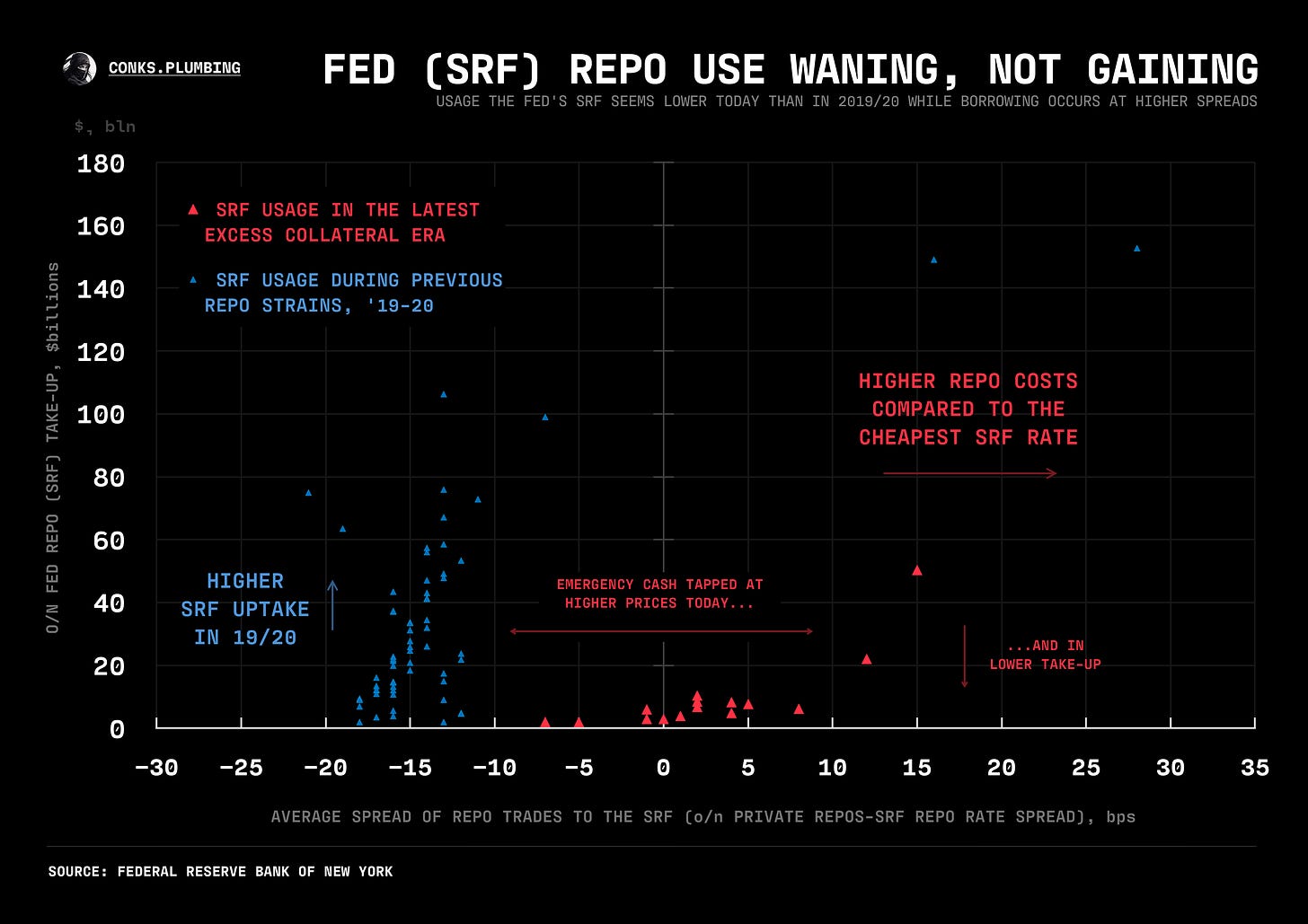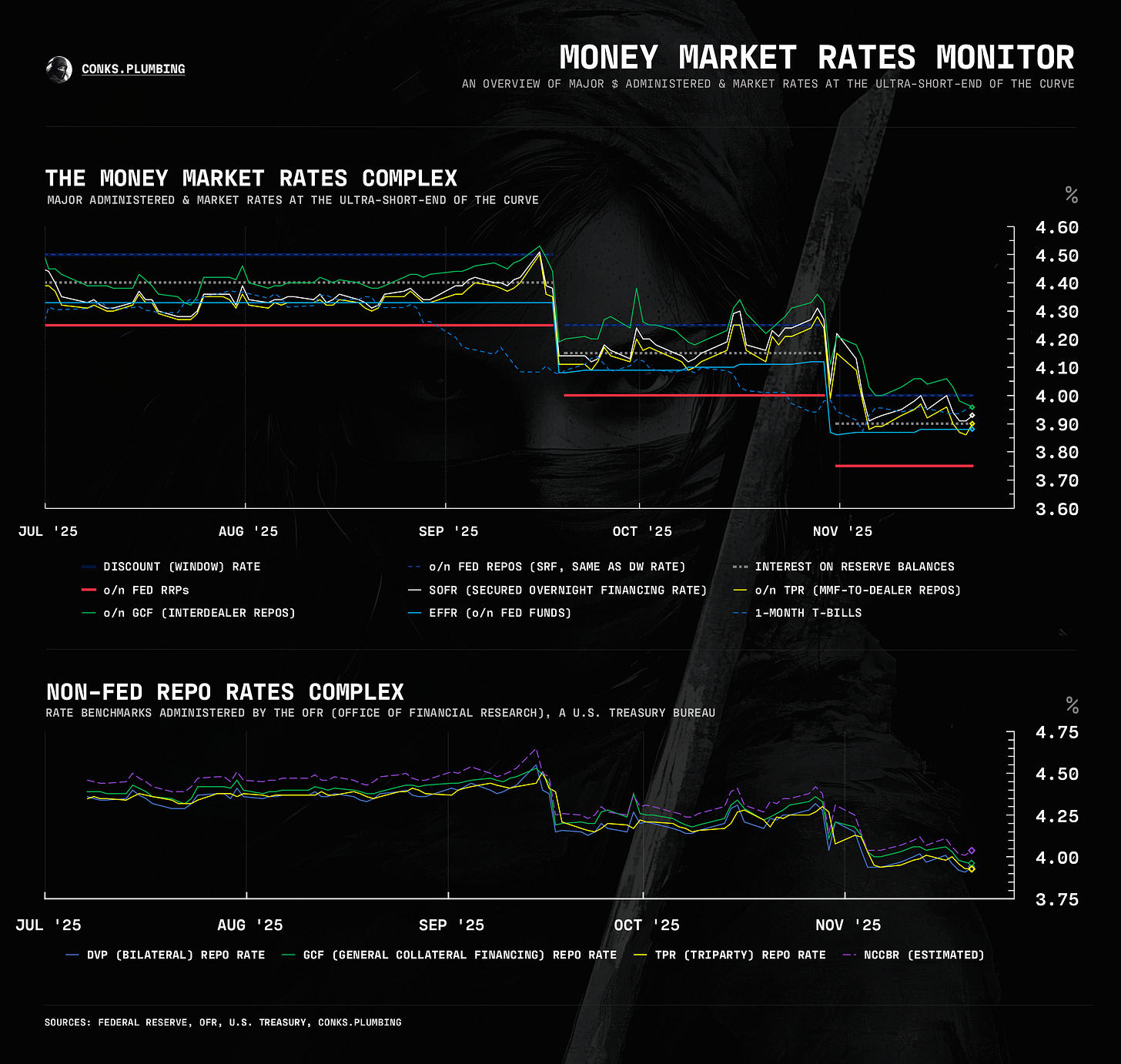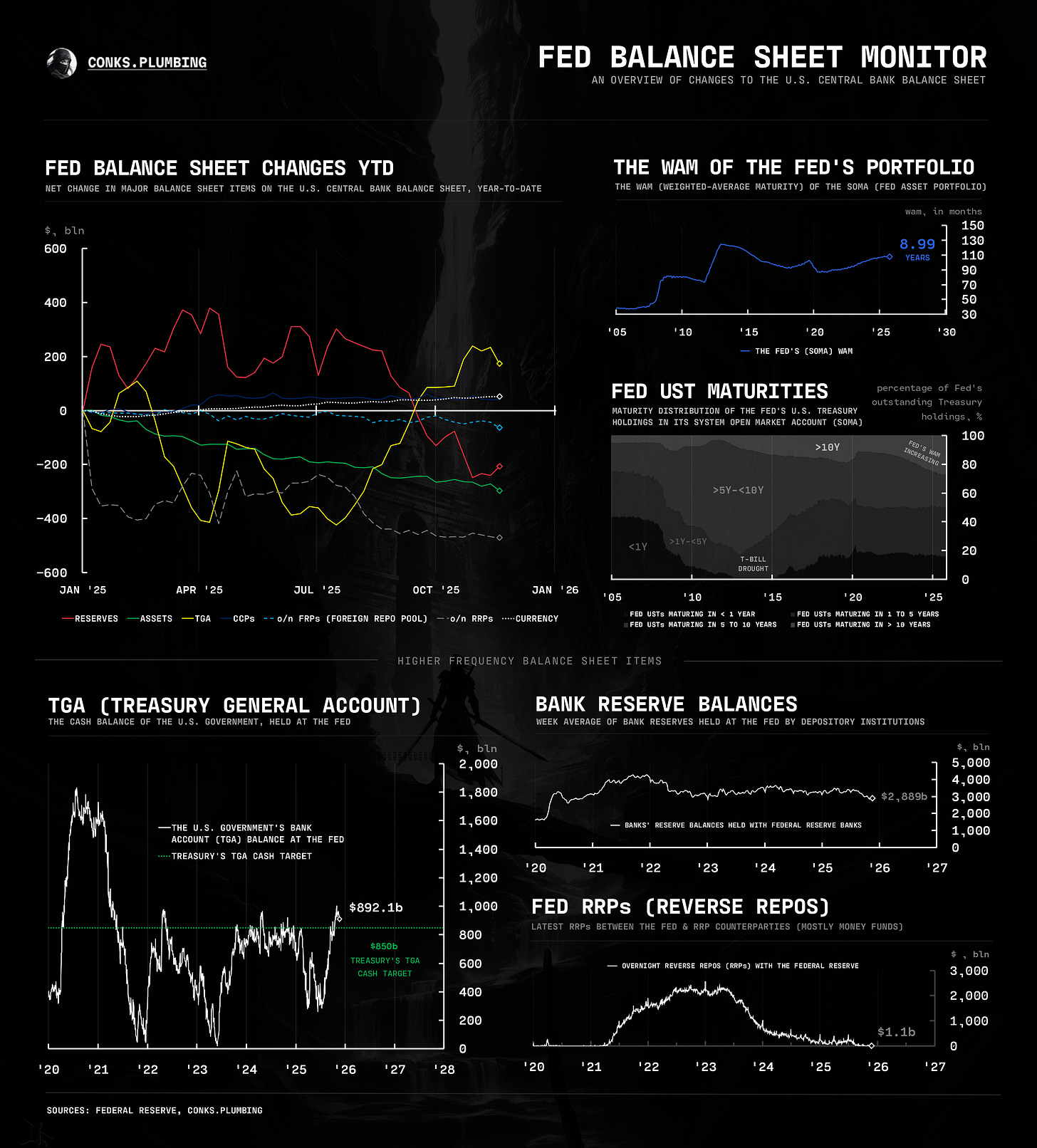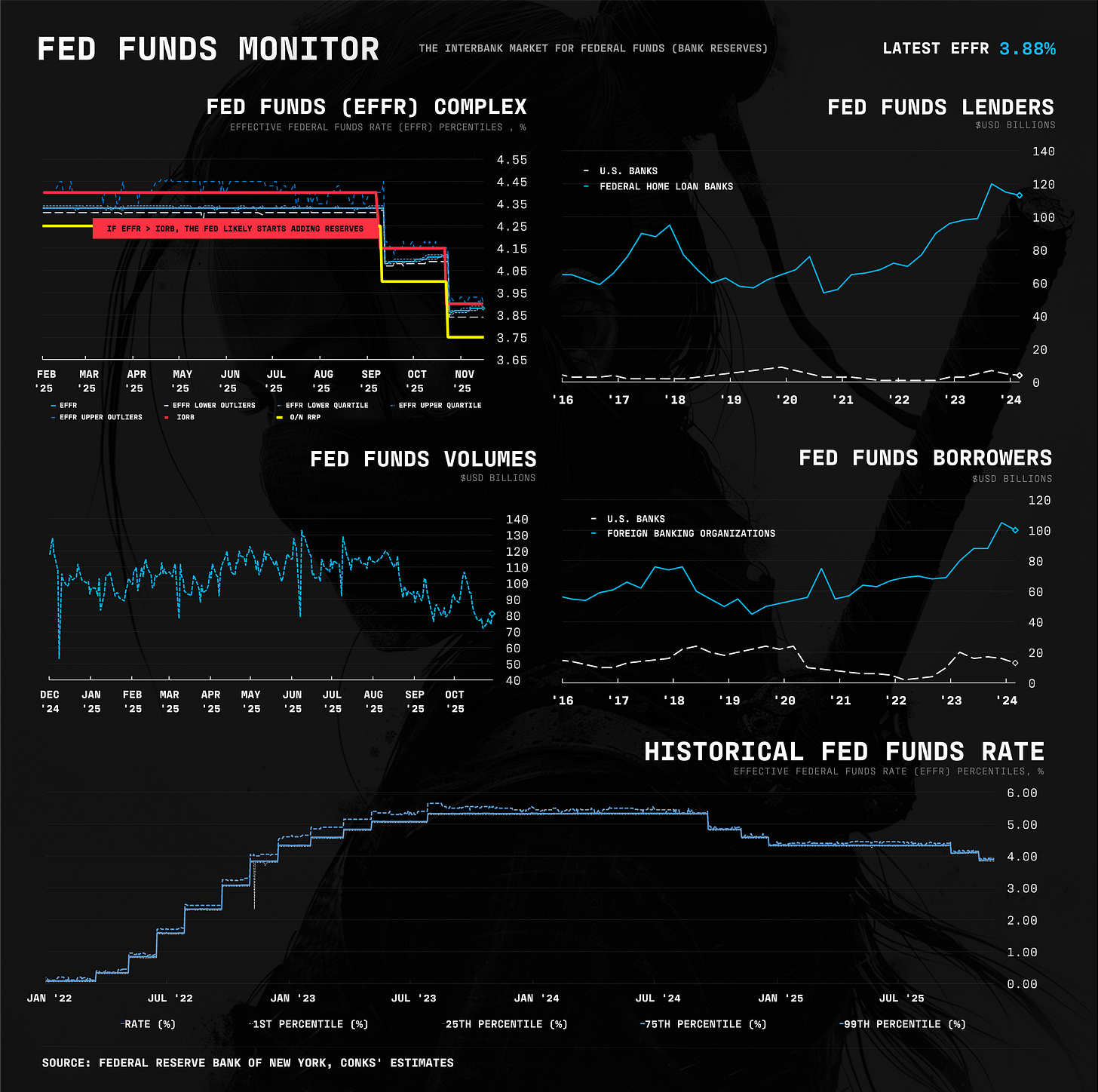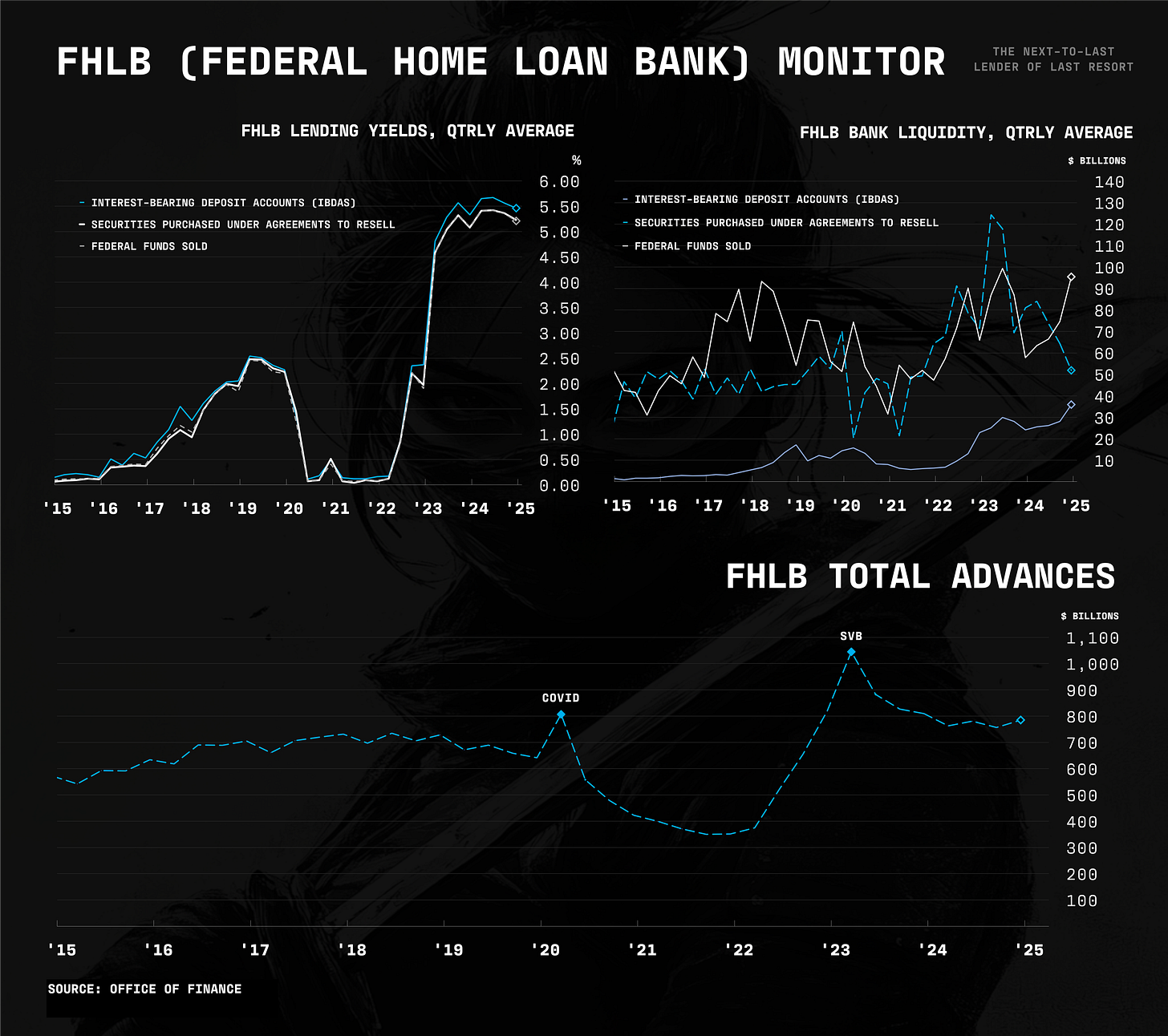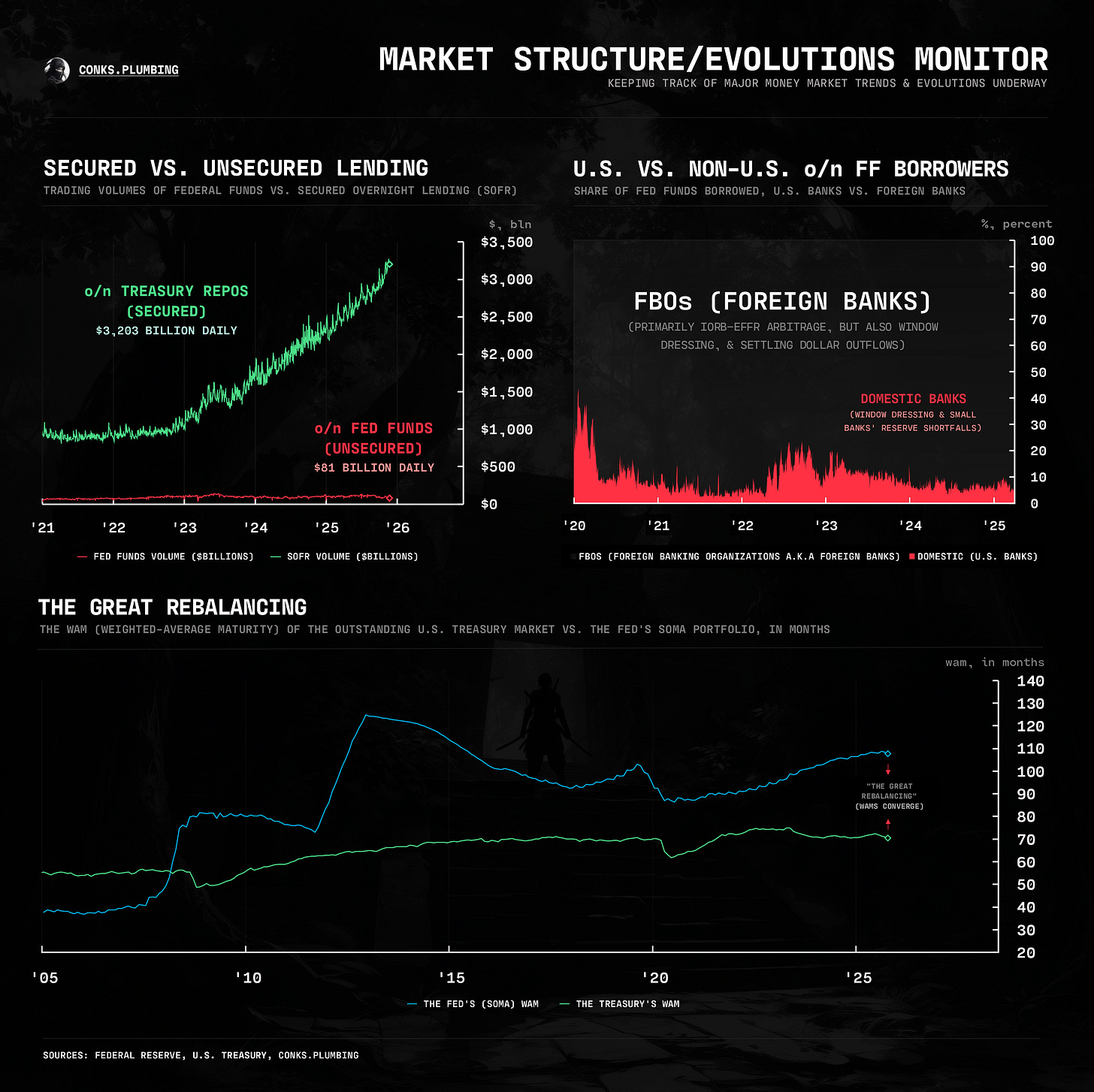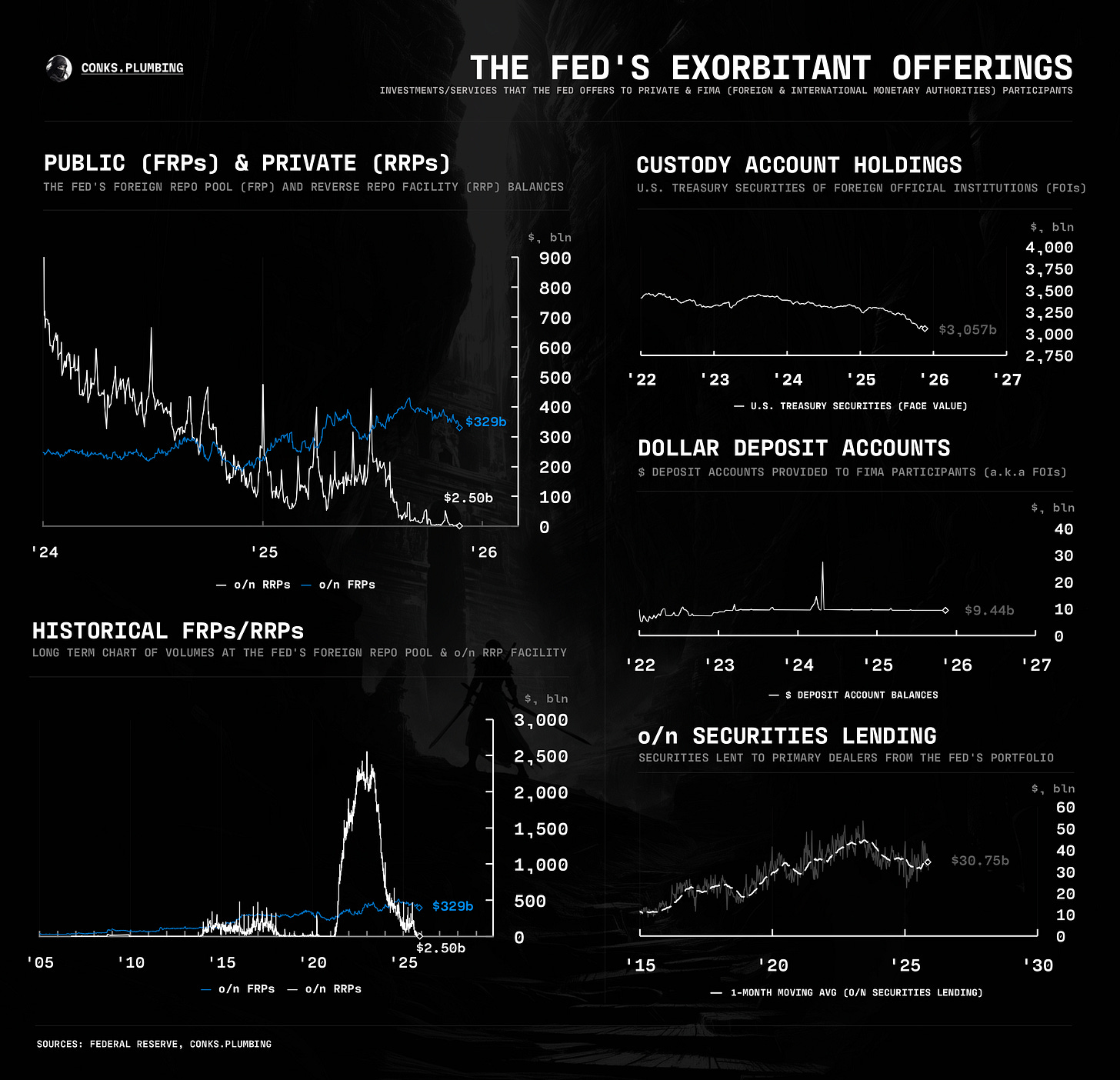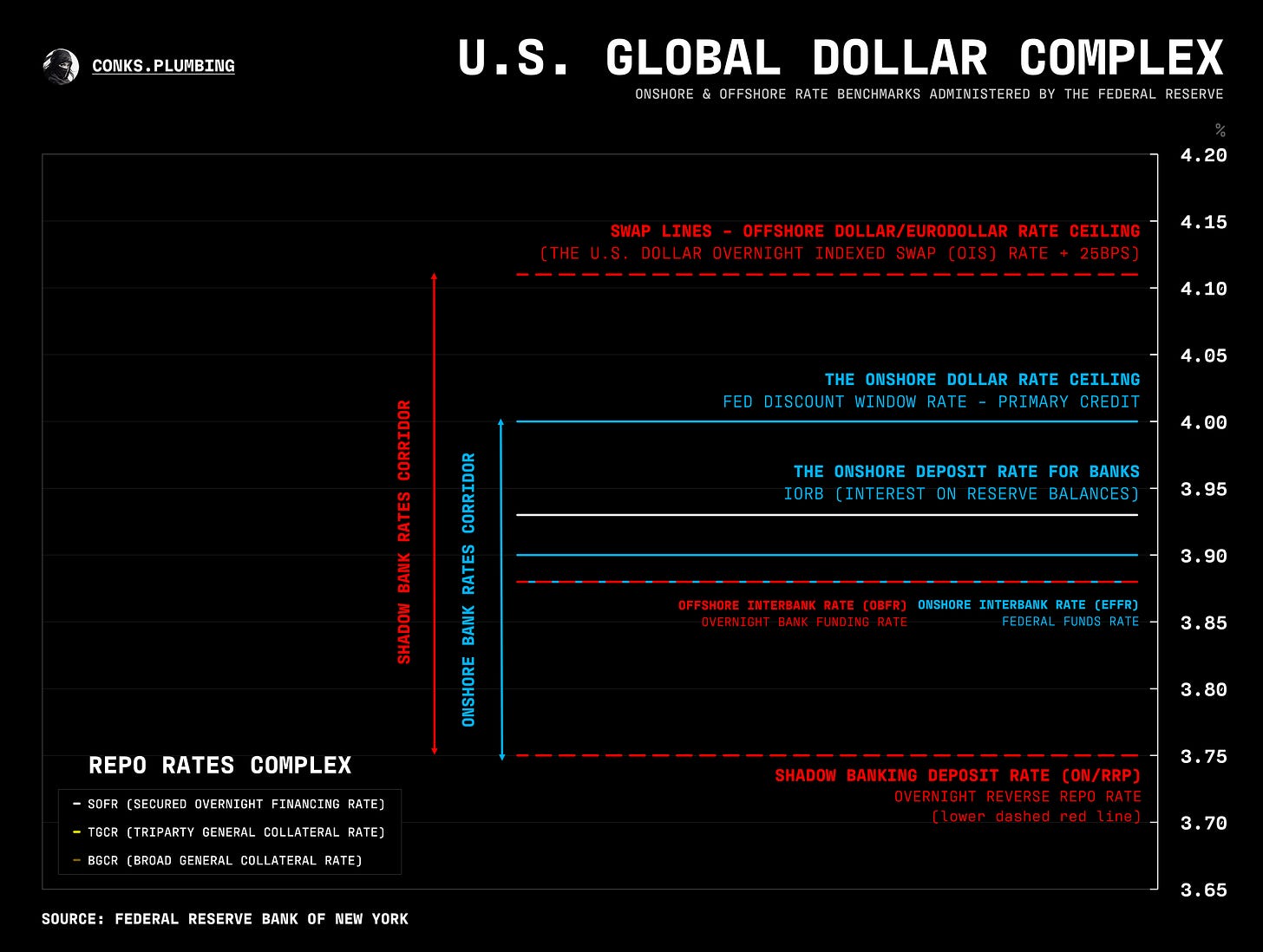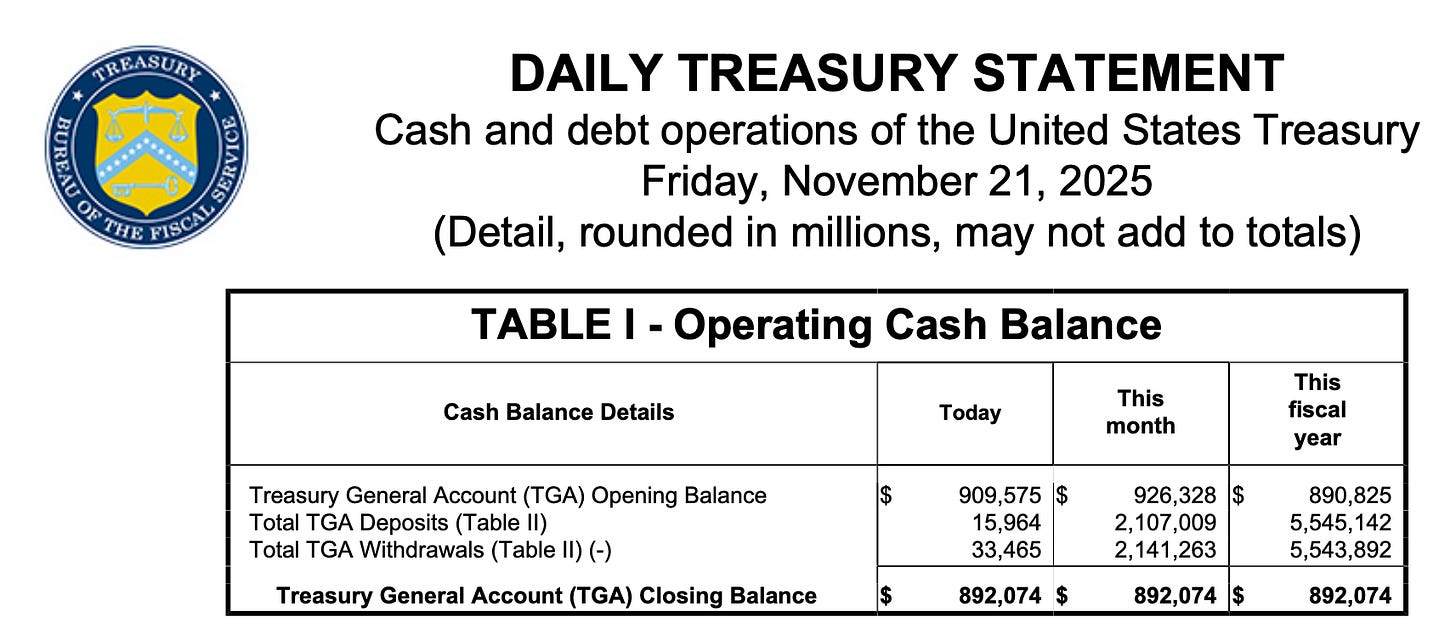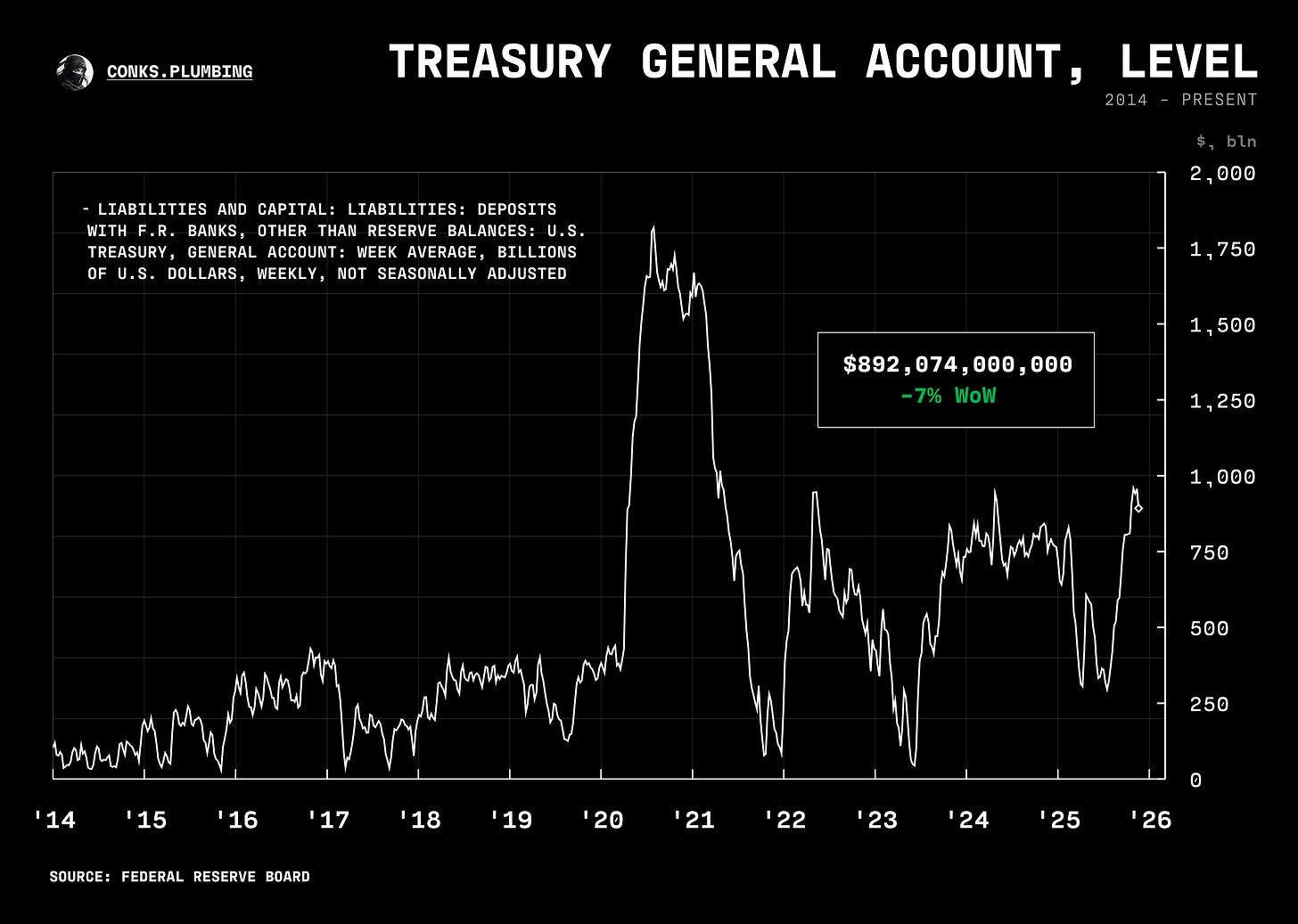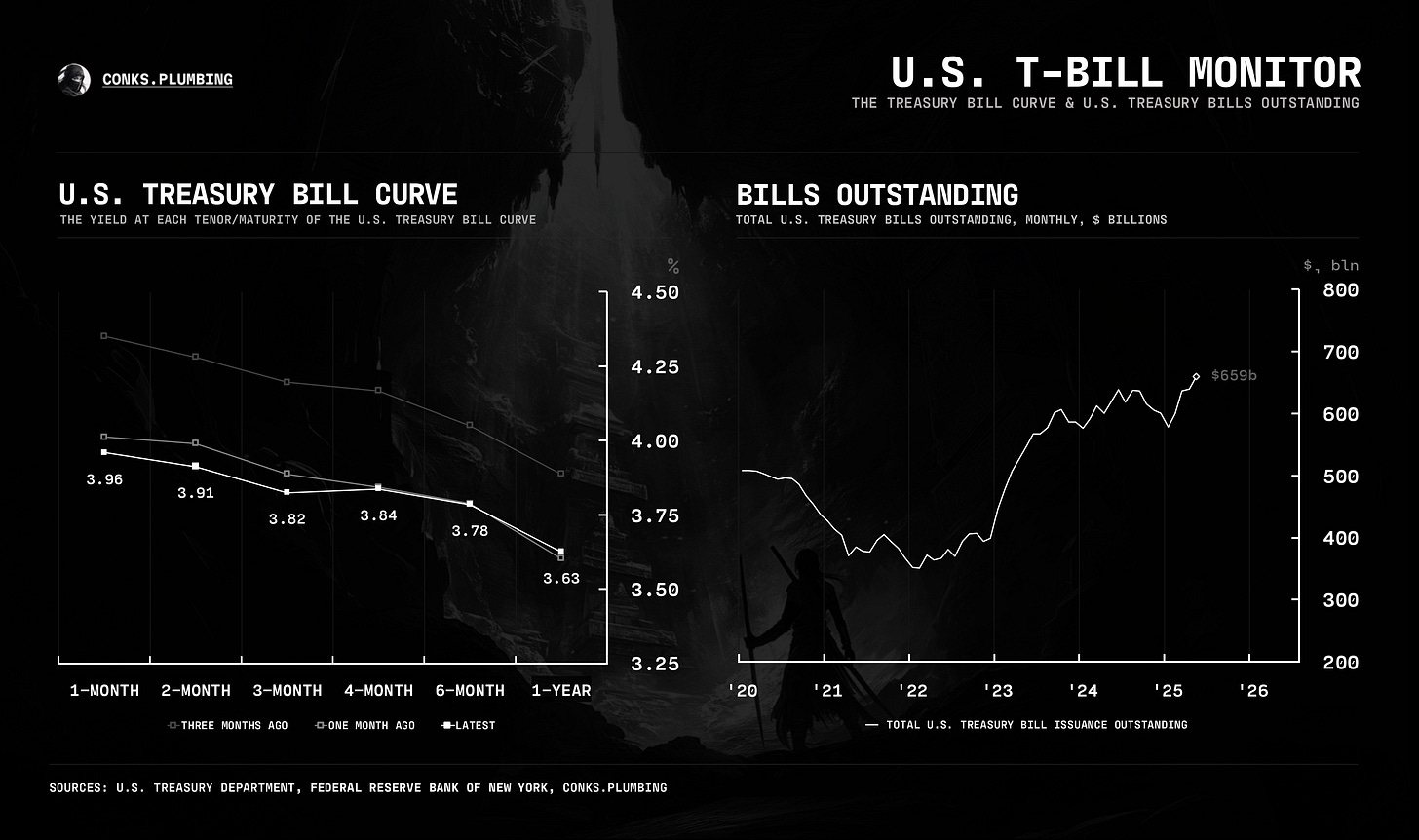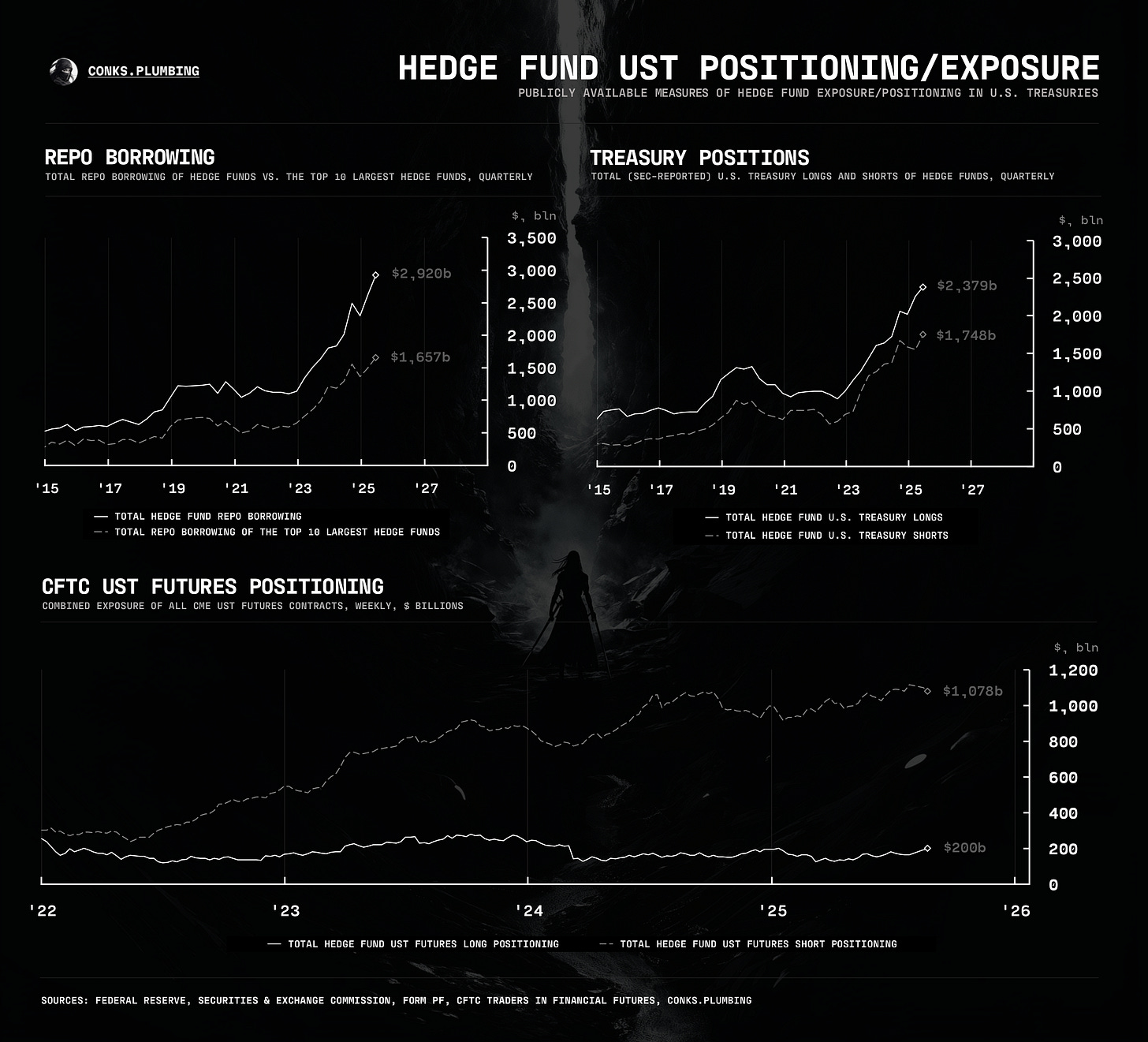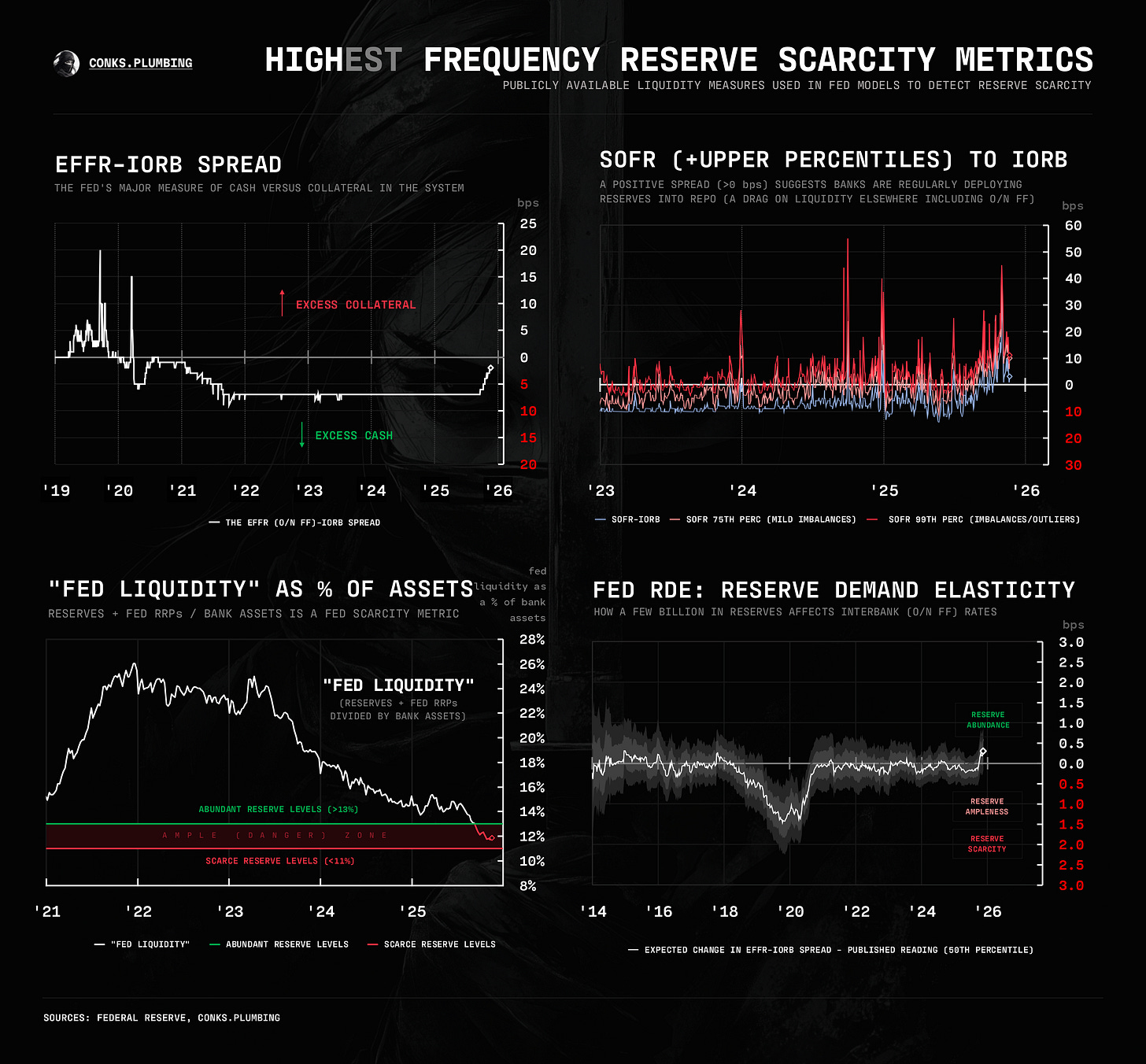Plumbing Notes: The Post-QT Era
the Fed's balance sheet "winter" is coming to an end
Welcome to Plumbing Notes #3. We’ve consolidated, revamped, and added new money market monitors to the chartbook below. Major pending works include an infographic deck on the modern Eurodollar system [███▒%], a detailed look at the Fed’s Great Rebalancing [█▒▒▒%], and a new central bank target rate [███▒%].
But first, Plumbing Notes on the post-QT playbook (and next up, an in-depth look at why the Fed’s SRF remains fragile)…
Money Market Commentary: The Post-QT Era
As market participants try to unravel the cause of an equity market correction, money markets have begun to make much more sense. Upon pricing in the highly unlikely event that the Fed would unleash an ocean of liquidity in December, to the point that conditions were priced to be looser in November, the market now agrees that dollar funding markets should be tighter by year-end. The market has driven the Nov-Dec SOFR-FF ‘25 spread — i.e. the gap between the expected SOFR-FF basis in November and December — back to positive whenever it strays into negative territory. A negative spread made little sense, given it suggested the Fed would initiate a “Hail Mary” and open the floodgates by injecting reserves before next year.
As for the November cash flood, admitting defeat, Conks’ 8bps target for the Nov SOFR-FF basis, i.e., the anticipated gap between SOFR and FF by November month-end, is now out of contention. Among the usual drivers, a reduced trading week paired with expected upward rate pressure from continued UST settlements means SOFR is scheduled to print just within the target range and the Fed’s SRF minimum bid, the cheapest rate to borrow via o/n (overnight) Fed repos, until month-end.
Multiple catalysts have failed to result in any (expected) major easing. The Treasury lowered this week’s six-month bill auction by $10 billion, which will be the first of many cuts to ultra-short-term issuance. There’s also a chance that the Treasury could overshoot on both sides in the amount of cash it holds in the TGA. After reaching over $1 trillion, the TGA has boomeranged to just $40 billion above the Treasury’s $850 billion cash target and could fall below. Even so, regardless of an already significant plunge in government cash balances, the market remains unconvinced of a leisurely November month-end, where SOFR trades closer to IORB (3.90) than the SRF’s minimum bid (4.00). Instead, month-end balance sheet pressures and settlements are predicted to drive SOFR on average just below the SRF min bid until December 1st, which happens to be the “official end” of the latest QT era.
The enigma of when the Fed will end QT has been solved. The next enigma is how high the Treasury will raise its TGA cash target next year. As highlighted in previous Plumbing Notes, 2026 will see Treasury issuance heavily weighted to bills over coupons (i.e. notes and bonds). More bills spur more frequent redemptions, increasing the need to hold more cash on hand. Meanwhile, the insatiable desire for money market funds — despite rate cuts — continues to rise, fueling demand for short-term USTs (U.S. Treasuries). The shift to — and appetite for — bills and their short-term nature indicate that officials will likely pencil in — at least — a $50 billion increase toward a $900 billion target by next year’s close. In fact, an increase in its target by $100b should surprise no one.
That’s a minimum of $50 billion or more in “neutralized” reserves, i.e. settlement balances trapped in the TGA, and unable to be used by banks to clear onshore and offshore dollar payments. Settling dollar transactions with Eurodollar deposits is now expensive for banks in the Basel III era — as our Eurodollar chartpack will soon demonstrate. This, alongside the rising number of forces draining reserves, regardless of QT2 (i.e. the second official quantitative tightening) ending, will back the need for the Fed to inject reserves totaling more than $240 billion by the end of 2027.
When will these injections via RMOs (reserve management purchases) commence? Various SOFR-FF spreads that proxy when the Fed may start re-adding interbank liquidity favor a delay to sometime between Q1 and Q2 2026. The Jan-Mar ‘26 SOFR-FF spread1 has turned negative — signaling higher expectations for delayed reserve injections, despite some expecting the Fed to add liquidity as soon as January.
Back to today, as QT draws to a close, there will also be little relief for December SOFR-FF. Greater interbank balances and a reduction in outstanding bill supply will only provide some harmony. The TGA drawdown will conclude while dealer banks soon face heightened (but well-telegraphed) balance sheet constraints at year-end. The “black swan” and relief for funding markets would be the Fed unexpectedly announcing a “trial run” of term repos, which would up dealers’ cash balances — while deflecting from the recent issues with its o/n repo facility.
With or without Fed assistance, however, the peak of a long and brutal balance-sheet winter is near. January will mark the start of the balance-sheet “bull market” as banks begin to lever up amid reduced (and soon to be reduced further) balance-sheet constraints. Meanwhile, the Fed’s next balance sheet “move” won’t be anything like the QE of the COVID era (or QE at all) as recent equity market price action confirms. Rather, like market participants have priced into the SOFR-FF curve, the Fed will keep its ample reserve regime ticking over (almost) on autopilot.
More Plumbing Notes
From the Conks feed (chat): The “emergency” Fed meeting and a reluctant “printer” & more…
In today’s Pro: anticipating the start of RMOs, extended SERFF color, the state of the UST belly, and more…
Chartbook
Changelog: major revamp of money market monitors, more to come…
WIP: STIR monitor/Treasury monitor to accompany these updates
If you act on anything provided in this newsletter, you agree to the terms in this disclaimer. Everything in this newsletter is for educational and entertainment purposes only and NOT investment advice. Nothing in this newsletter is an offer to sell or to buy any security. The author is not responsible for any financial loss you may incur by acting on any information provided in this newsletter. Before making any investment decisions, talk to a financial advisor.
EFFR, OBFR, SOFR, TGCR, and BGCR are subject to the Terms of Use posted at newyorkfed.org. The New York Fed is not responsible for publication of tri-party data from the Bank of New York Mellon (BNYM) or GCF Repo/Delivery-versus-Payment (DVP) repo data via DTCC Solutions LLC (“Solutions”), an affiliate of The Depository Trust & Clearing Corporation, & OFR, does not sanction or endorse any particular republication, and has no liability for your use.
viewable via Bloomberg on “SERFFF6H6” or TradingView via “CME:SR1F2026-CBOT:ZQF2026-(CME:SR1H2026-CBOT:ZQH2026)”



